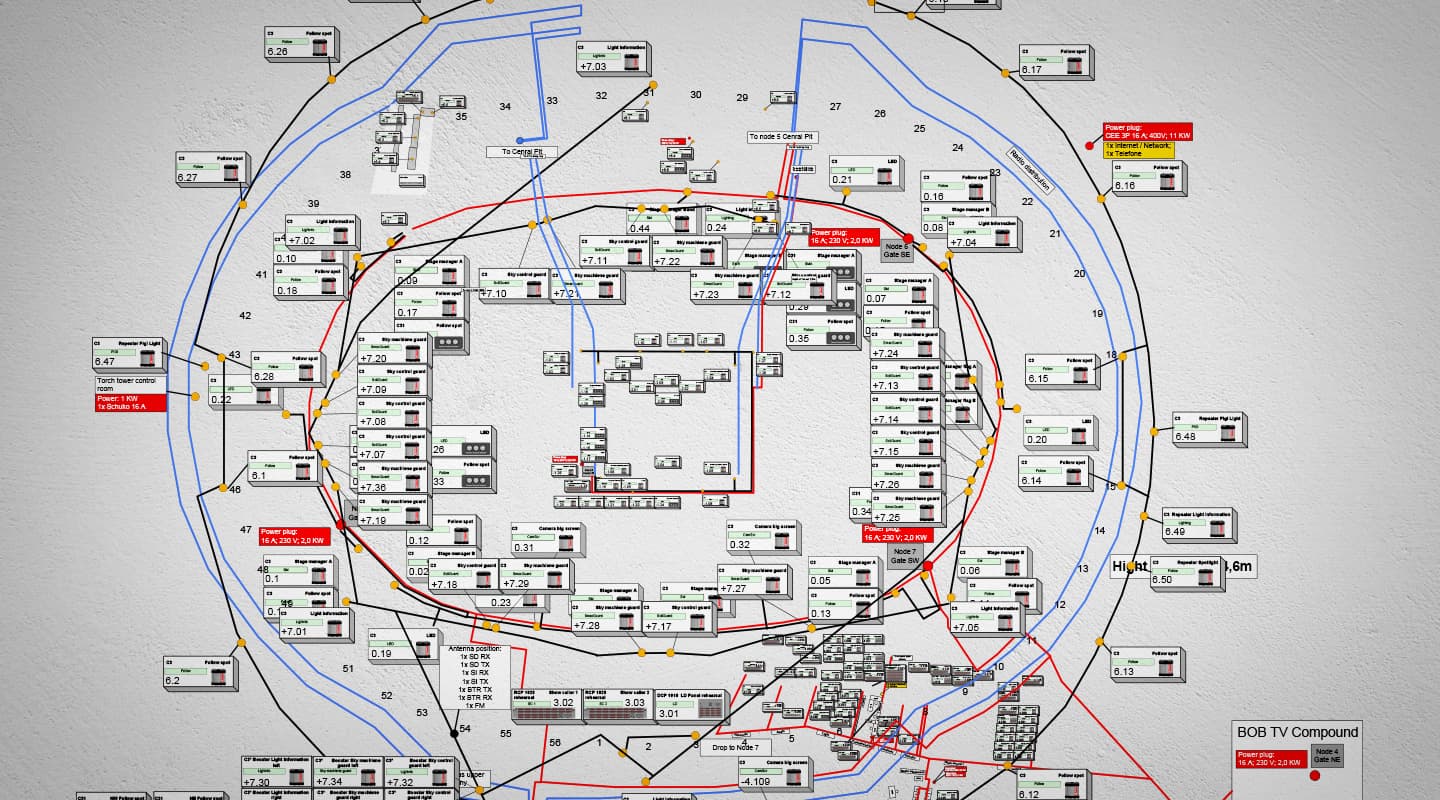
Olympic Comms
Communications for the the world’s biggest ever live show.
Text:/ Andy Ciddor
When you’re staging a show for billions of viewers with dozens of technical departments consisting of hundreds of crew, thousands of front of house staff, dozens of support departments, 18,000 performers, and a security operation that includes liaising with the world’s largest standing army, the matter of coordination through communication becomes a major factor in the success of the enterprise. Staging the spectacular opening and closing ceremonies of the Olympic and Paralympic games in Beijing was a matter of immense national pride for the Chinese people. So important was it that they diverted the communications engineers from their moon landing project to specify in great detail, the communications system that would be used for the ceremonies. This approach was unlike many previous Olympic ceremonies (such as Sydney and Athens) where overseas ‘ceremonies experts’ were brought in to supervise the inexperienced locals who were not considered to be equal to the task.
Riedel Communications won the tender for the system after convincing the Chinese engineers that its distributed matrix-based Artist system was at least as capable as the traditional centralised systems that were tendered by the other bidders. According to Marc Schneider, Riedel’s Rental Director for International Events, it was clear from the outset that Riedel was there simply as a skilled equipment and service provider to plan, supply, install and operate the largest and most complex temporary intercom installation ever built. Rather than rely on the availability of good technical translators for day-to-day operational discussions, the Riedel team included six Chinese speakers, two of whom were factory engineers from Germany.
Linked by dual redundant fibre optic rings, the eight Artist frames were configured as a 700 x 700-point non-blocking matrix, where no user panel was further than 50 metres from a frame. Together with uninterruptible power supplies, the dual fibre ring system ensured the system could continue to operate despite major infrastructure failures. In reality, the system operated for its entire six-month life with only a single minor fault — a card in an Artist frame, which caused no disruption, as the redundant spare card in the frame seamlessly replaced it in the matrix.
The system comprised 80 Artist control panels, 24 digital partyline interfaces driving 210 Performer C3 beltpacks, 44 RiFace wired to radio interfaces, 650 handheld radios, six FM radio transmitters and 18,000 FMR-1000 mass monitoring FM radio receivers worn by all performers. Developed by Riedel for large-scale events the FMR-1000 are capable receiving signals from outside of the commercial FM broadcast band to allow the use of channels that are free of any commercial users.
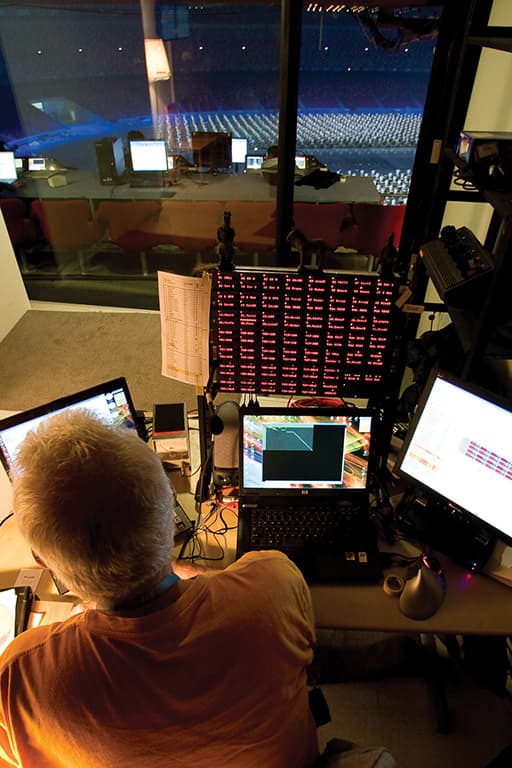
Comms control at the Bird’s Nest stadium.
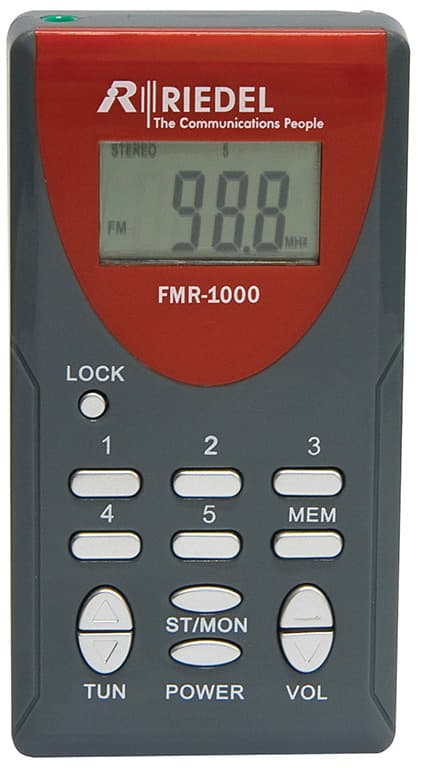
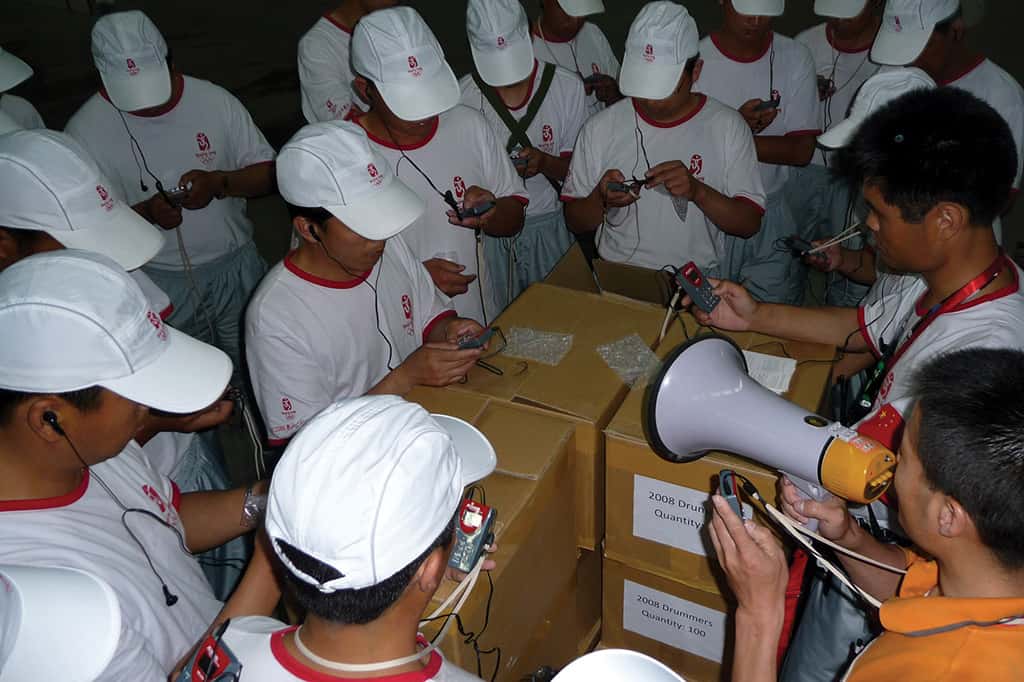
Some of the 2008 drummers being given their FMR-1000 receivers.
The original specification called for only(!) 12,000 units to be shared between performers during the ceremony. However, in rehearsals it became clear that the logistical complexity of transferring 6000 receivers in twenty minutes during the ceremony would be a major problem, so with only three weeks to go before the opening ceremony, a further 6000 units were ordered and supplied.
To deal with the classic problem of poor wireless reception in the concrete and steel structure of the Bird’s Nest stadium, many kilometres of ‘leaky coax’ were run throughout the stadium structure to provide full duplex coverage for all wireless devices
Although this may have been the biggest temporary communications system ever installed, it was only a small part of Riedel’s total involvement in the Beijing Olympics. It also supplied communications to a large number of the television broadcasters covering the games and to all of the venues for the competition events. And while its Olympics system was in place in Beijing it was also a major supplier to the World Youth Day events here in Australia (see Wave If You Can Hear Me on page 50.)










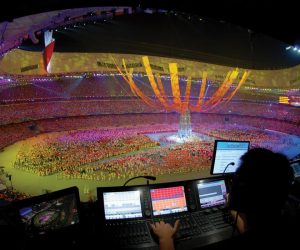




RESPONSES